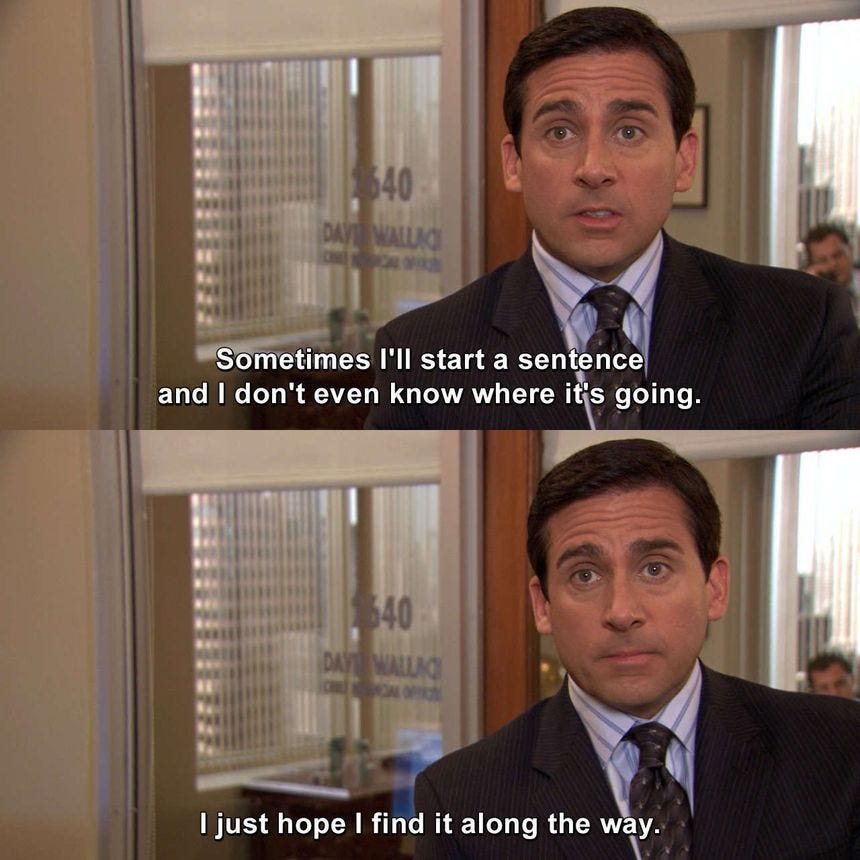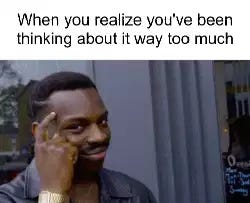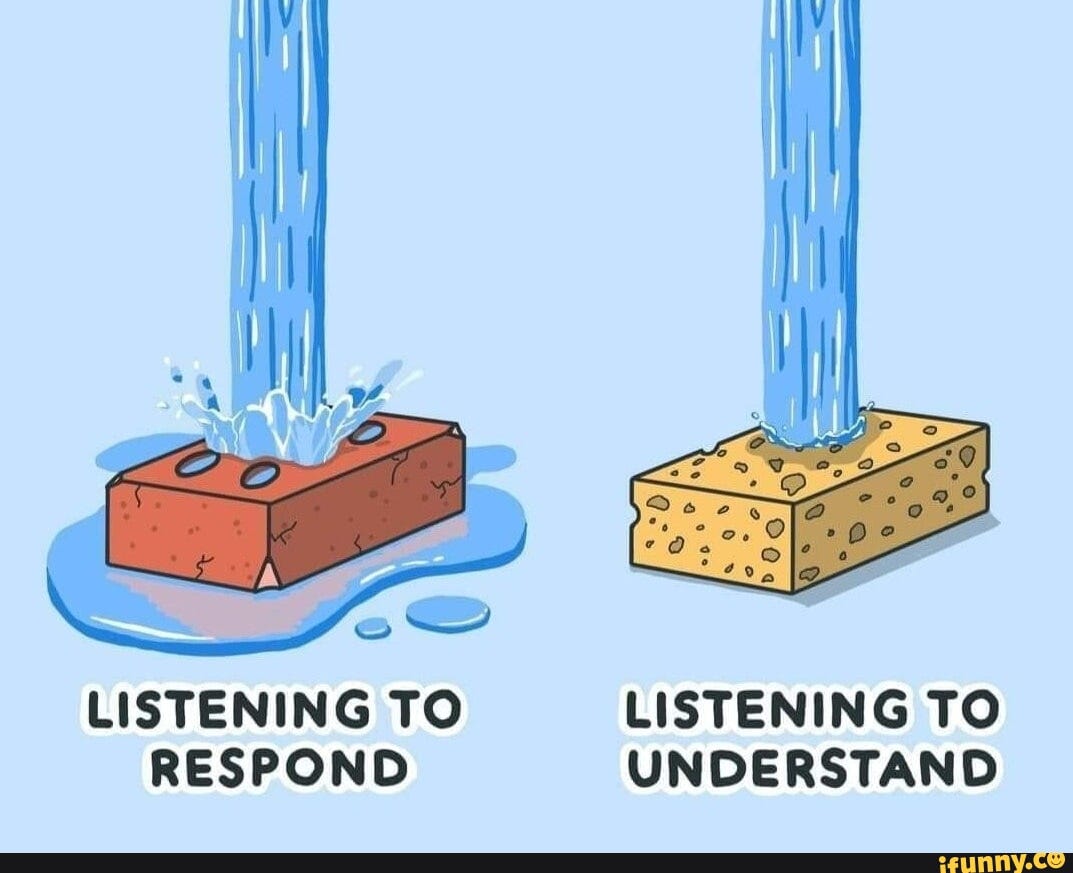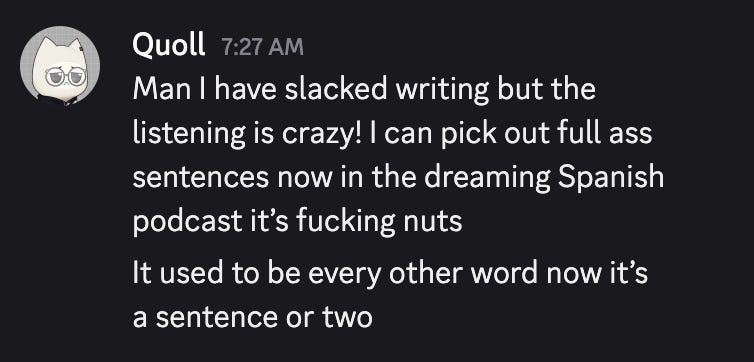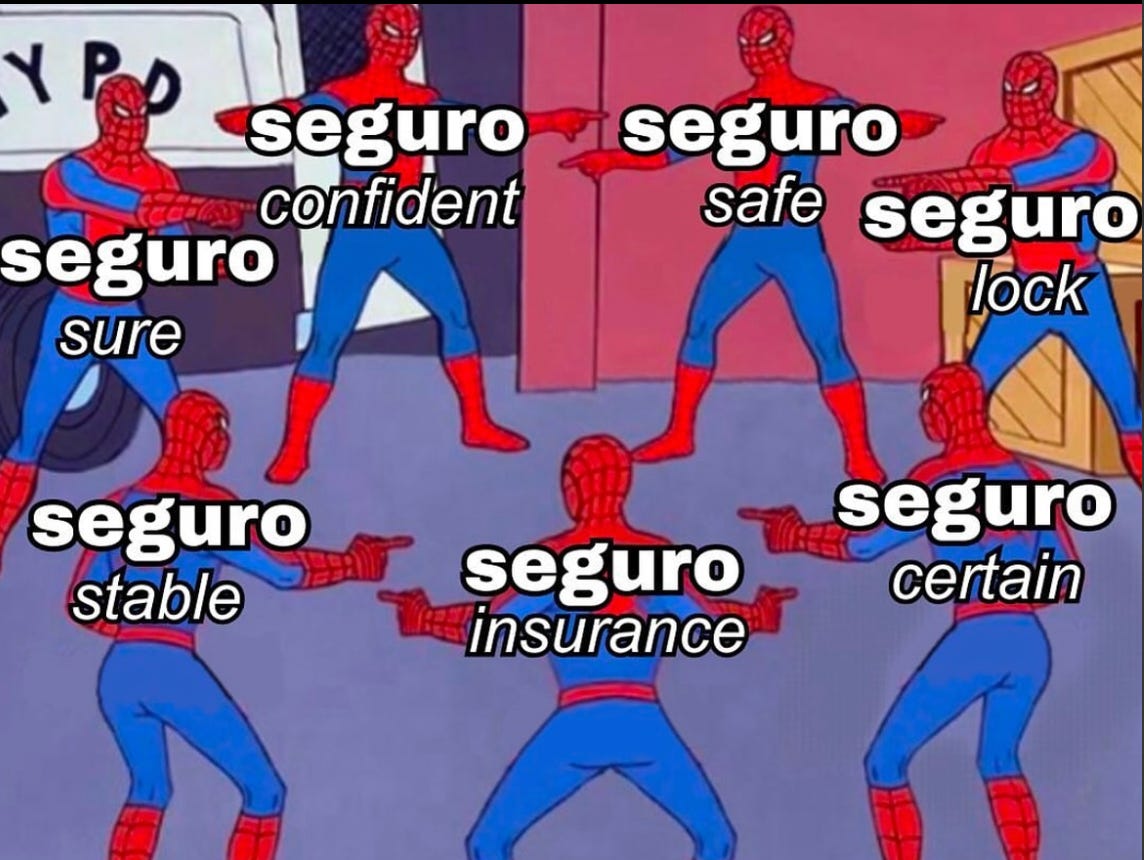What's the rush?
The toll stress takes on your brain
Welcome, aspiring polyglot! Just about every week now I have a student who sees the benefits of slowing down in class. When learning a new language, speaking quickly and speaking quietly are the two main ways people try to speak without taking too big a risk. If people can’t understand what you said because it was inaudible and unintelligible, then it doesn’t really matter if you got the words and grammar correct, right? When said plainly, it makes no sense. Still, it is a very easy trap to fall into for most language learners.
Finish your sentences
The first and most simple step of this process is working your complete sentence out in your head before trying to translate it to the language you are speaking. Not only is this challenging because it is learning to think in a new language, you are probably also not practiced at thinking through your sentences in your native language. Starting this practice in your native language is a powerful technique that will carry over into your target languages.
Everyone’s natural first step is to start translating word by word. The main problem with this, though there are many, is that all language is contextual. Just because a word means something in one context does not mean that it will mean that thing in every context. By working through the entire sentence you can make sure you are choosing the right word for the right situation.
The benefits of completing your thoughts before speaking extend far beyond simply choosing the right wording when speaking your new language. Much of the problems you face could be solved with more precise language and the only way to accomplish that is to think before you speak. Doing this practice in your native language comes with the benefit of learning to be comfortable in silence even when speaking naturally.
For whatever reason, silence is feared by language learners more than mistakes. Of course, that fear usually comes later down the line, but it is just as pervasive as the fear of mistakes. Being afraid of silence leads to more misunderstandings and complications than one might initially expect. Between filling space with awkward speech and sounding incoherent with intermittent “umms” and “uhhs”, a fear of silence is often contributory to a decline in confidence over time.
Of course the goal is to be able to speak about to anyone about anything at any time. However, as you progress the metrics will shift from quantity to quality and you will be fighting to present the best language rather than the most language. Working at that from the start will make a huge difference over time. It may start small, but as with many things it will happen slowly then suddenly. Adding this practice into every aspect of your acquisition will help you progress quicker.
Listen, don’t hear
All people tend to listen to respond rather than to understand. While this is less than ideal in general, it is outright counterproductive when working on a new language. Since the what you are hearing is going to be context dependent, listening to respond can cause you to latch onto singular words that do not always share the same significance. Ironically, if you listen to understand rather than to respond, your responses will be invariably better.
Training this in private, however, is far easier and safer than training it live with native speakers. I always advise the people I work with to use YouTube as a resource because it is free and comes with every feature you could hope for in a language learning tool. You can control the speed, the content, the orator, get transcripts and rewind when necessary. Listen to everything and allow the exposure to speed up your sorting ability over time.
At first you may only understand a word or two. Soon, though, that word will become a sentence and then two sentences then five then ten. Slowly then suddenly you find yourself following along with native speakers as they discuss any subject you can imagine. Be patient as you progress, but always be fighting for one more word, one more conjugation, and one more breakthrough. I know it works because I am blessed enough to receive messages like this frequently:
Read intentionally
The best way to start training yourself to think all the way through the sentence is by reading with intention. When you read in your native language, you can go word by word because you know what to expect next. All of the grammar is so ingrained that you likely cannot explain why you place the words you use in the order you do. That’s okay, that is the goal we are after for this new language as well, but it cannot happen instantaneously.
When people are reading in a new language, the most common mistake they make is translating each word as they see it. This is one of the underlying problems with flashcards: they train you to see a word and translate it on sight. Unfortunately, when you are working with a word that can mean different things in different contexts like the word “object”, for example, translating it on sight can cause major problems for the rest of the sentence.
Reading can make this process feel easier, or at least quicker, because you will notice a difference after only a few study sessions. If you are working with someone as an instructor you might even find that you notice a difference after a single study session. There are more levels to this, but the most important way to step this up is by beginning to read aloud.
People find it odd when I say they need to read aloud without trying to understand what they are reading, but there is a method to the madness. I tend to have people reading full paragraphs early on in their language journey not because they understand everything, but because they need to start forming the ability to speak fluidly as early and as often as possible. All of these things work, in a way, to slow you down so that you can produce more smoothly.
Conclusion
Slow isn’t always faster, but think about it this way: you either have to speak slowly, take time with silence to think, and express yourself correctly once or you have to rush through your sentence, make a ton of mistakes, and correct yourself again and again. I don’t think one way is inherently better than the other either, I happen to have taken the latter approach. From experience, I can tell you the former is far less painful. But at the end of the day, you need to do what works for you.
That means doing what hasn’t been working is only holding you back. If you have been trying to go word by word, give this all a try for 21 days. You might be shocked at how rapidly your skills progress. It will be difficult, but you can do difficult things and be great. So get out and do some difficult things and become great. I am rooting for you.
Requests
If you have anything you would like covered you can reach out to me on X, Instagram, or at odin@secondlanguagestrategies.com.
Additional Resources
Don't want to spend time playing catch up? Pick up the 3 Months to Conversational book now available on Amazon! 3 Months to Conversational
Already bilingual? Don’t let your languages deteriorate. Get your very own Language Maintenance Manual today!
For more long form content be sure to check out the website and the FREE Language Learning PDFs we have available!
Subscribe for new content on YouTube and TikTok!
Learning Spanish? We have begun aggregating resources in you Spanish Resource Newsletter!
Don't forget to pick up your very own French Language Logbook or Spanish Language Logbook


